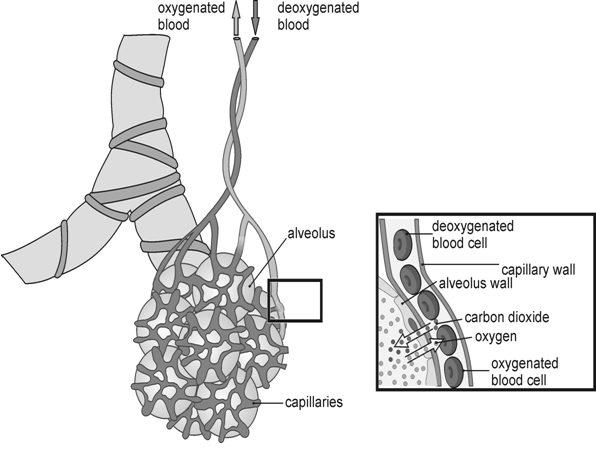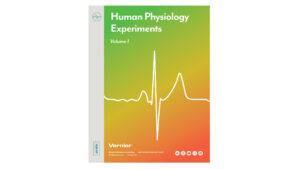
Introduction
Oxygen is required for cell metabolism. During inhalation air is brought into the lungs, where oxygen gas is extracted. Oxygen diffuses into the bloodstream at the membrane between the alveoli and pulmonary capillaries. The quantity of oxygen extracted from the air is dependent on the composition of the air and on the efficiency of the lungs. The percent concentration of oxygen in air on earth is almost uniformly 21% between sea level and the stratosphere. At sea level the density of the air (molecules/unit volume) is greater than it is at higher altitudes, allowing a greater number of molecules to be inhaled with each breath.
Diseases in which lung tissue is damaged reduce the ability of the lungs to absorb oxygen. Examples include emphysema, in which there are fewer total alveoli, and pulmonary fibrosis, in which scarring hinders oxygen transfer across a thickened membrane. Depending on the severity of the disease, people with lung disease may require supplemental oxygen. Oxygen may be supplied in concentrations anywhere from 21% to 100%. In less severe cases oxygen may not be required at sea level but needed at higher elevations or when traveling by air.
The majority of oxygen is carried in the blood by hemoglobin molecules. This is dependent upon the partial pressure of oxygen, but the binding of oxygen is efficient over a wide range of oxygen pressures. This relationship is demonstrated in the “Oxygen-Hemoglobin Dissociation Curve”. In conditions where hemoglobin concentration is low (anemia), oxygen delivery to the tissues is proportionately decreased. Blood transfusions, rather than supplemental oxygen, will increase oxygen delivery to the tissues.
In this experiment, you will observe the quantity of oxygen that is absorbed from inhaled air by measuring the concentration of oxygen remaining in exhaled air. Successive breaths will further lower the oxygen concentration, allowing you to observe the efficiency of oxygen extraction by the lungs at lower oxygen concentrations.
Objectives
- Measure the concentration of exhaled oxygen.
- Observe the efficiency of oxygen extraction by the lungs as the inhaled oxygen concentration is reduced.
Sensors and Equipment
This experiment features the following sensors and equipment. Additional equipment may be required.
Ready to Experiment?
Ask an Expert
Get answers to your questions about how to teach this experiment with our support team.
- Call toll-free: 888-837-6437
- Chat with Us
- Email support@vernier.com
Purchase the Lab Book
This experiment is #12 of Human Physiology Experiments: Volume 1. The experiment in the book includes student instructions as well as instructor information for set up, helpful hints, and sample graphs and data.


